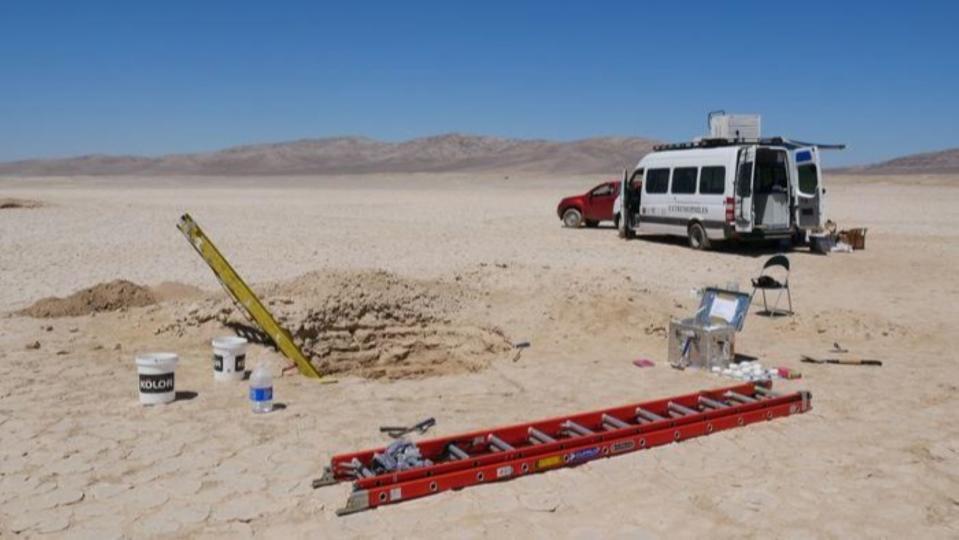Hidden 'biosphere' of extreme microbes discovered 13 feet below Atacama Desert is deepest found there to date

A rich microbial "biosphere" lies buried 13 feet (4 meters) beneath the scorched surface of Chile's Atacama Desert, new research has found. The hidden world of bacteria is one of the deepest found in Atacama soils and could inform the search for life on Mars.
Microbial life has previously been recorded down to depths of 2.6 feet (80 centimeters) in the Atacama Desert, but the new biosphere, in the region's bone-dry Yungay Valley is "completely isolated from the surface," according to the researchers.
The newly discovered community inhabits soils between 6.6 feet (2 m) and at least 13 feet deep, according to a study, published Tuesday (April 23) in the journal PNAS Nexus. It is dominated by Actinobacteria, a diverse group of bacteria found in other extreme environments, including the Arctic, boiling hot springs and salty seas.
"Little is known about microbial life in deeper sediment layers," researchers wrote in the study. "Communities described in this study could represent the upper extent of a deep biosphere underneath hyperarid desert soils."
The researchers also found Actinobacteria living closer to the surface, between 0.8 and 2 inches (2 to 5 cm) deep. Digging deeper, the team found bacteria belonging to the phylum Firmicutes, which are resilient to high concentrations of salt and do not require oxygen to survive, according to the study.
Related: Lost world of lagoons filled with mounds of microbes discovered in Atacama desert
The Atacama Desert is the driest hot desert in the world, receiving as much sunshine as Venus. While only a handful of animals survive the harsh conditions — including Darwin's leaf-eared mouse (Phyllotis darwini) and the South American gray fox (Lycalopex griseus) — some bacteria thrive in the desert's salty, mineral-rich soils.

To find out more about these microscopic inhabitants, the researchers extracted soil samples from a pit in the Yungay Valley and extracted any DNA fragments they could find. Previous work has not differentiated between DNA from living and dead microbes, so the researchers designed a method to separate DNA still contained in living cells — known as intracellular DNA — from free-floating, or extracellular DNA.
"This approach provides a significant improvement for microbial diversity studies of extreme environments as it effectively eliminates bias from DNA derived from dead cells," they wrote in the study.
Bacteria were abundant in the top 2.6 feet of soil, but they were virtually absent between 2.6 and 6.6 feet deep, where salt concentrations were too high for even the sturdiest microbes. But at the lower depth, the researchers discovered a "transition zone" to a stable microbial community. This transition zone coincided with a change from clay-rich soils known as playa deposits to ancient river deposits.
RELATED STORIES
—Mysterious glass in the Atacama Desert may be from an ancient exploding comet
—Farming brought burst of extreme violence to Atacama Desert, ancient mummies reveal
—Detecting life on Mars may be 'impossible' with current NASA rovers, new study warns
The team suggests Actinobacteria colonized the river deposits around 19,000 ago and became buried beneath playa sediments over thousands of years. They also proposed that the microbes survive at depth by extracting water from gypsum, which forms when the mineral anhydrite is exposed to water. This reaction is reversible at high temperatures, which could release water within Atacama soils.
The Atacama desert is often used as an analog for studying the harsh conditions of Mars, where the surface is completely lifeless, but may hide evidence of microbial life below. The new research could further inform the search for life on the Red Planet, as Mars also has gypsum deposits, which could potentially serve as a water source for extraterrestrial life, the researchers noted in the study.
"To our knowledge, this represents the deepest microbial survey and discovery of microbial life in Atacama soils to this day," they added.

